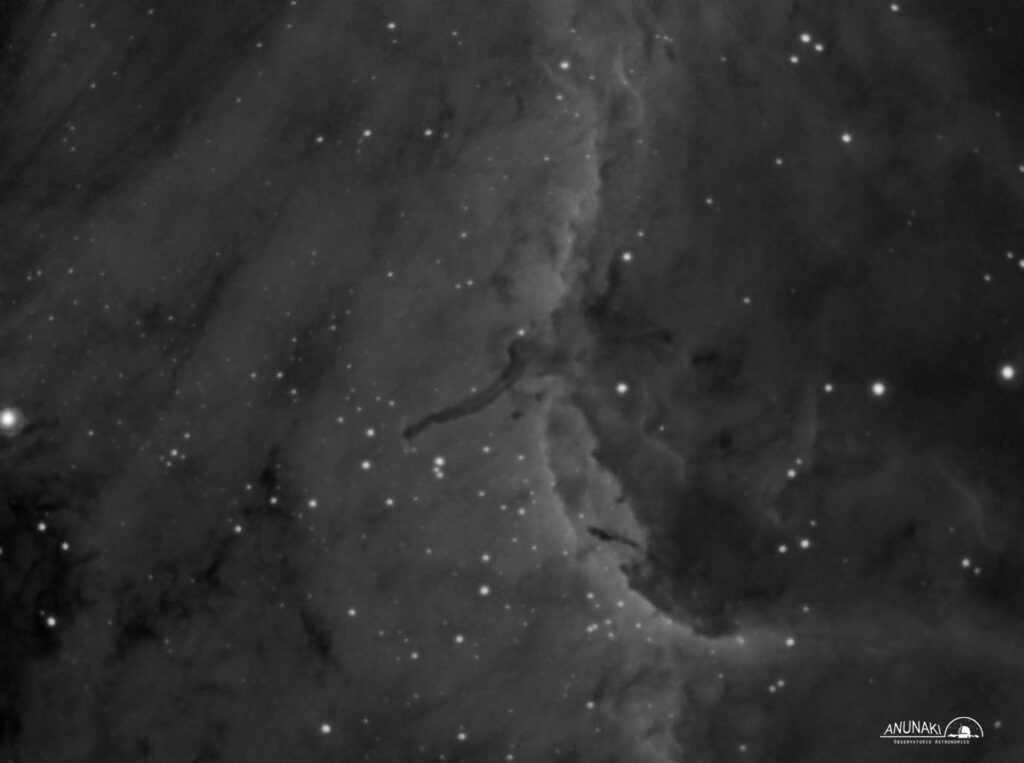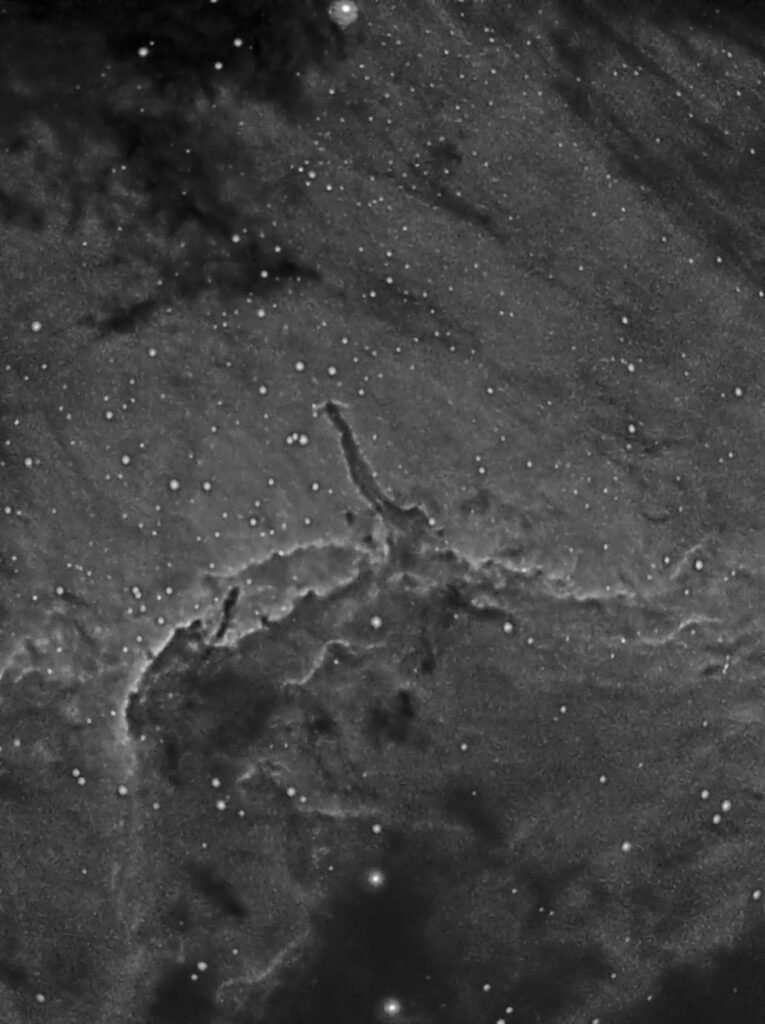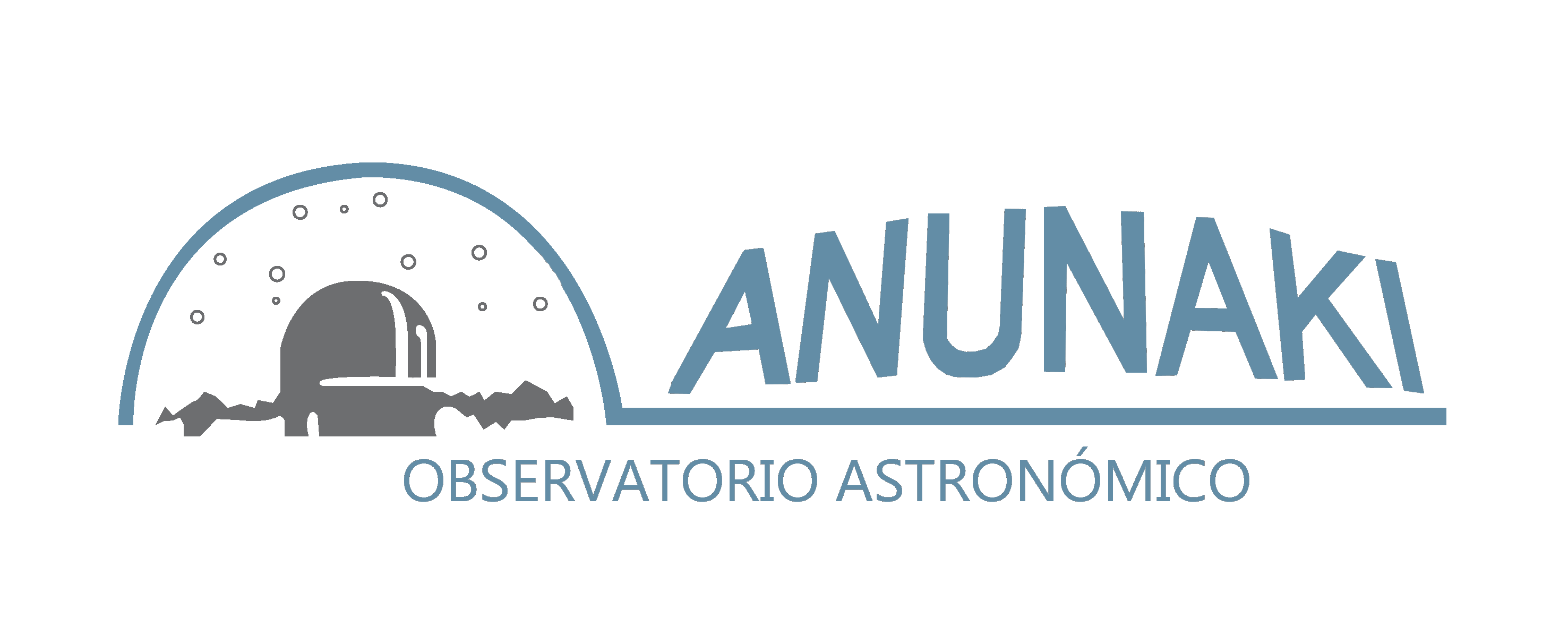HH 555 is a Herbig-Haro object within the star-forming pelican nebula (IC 5070 and IC 5067), which is located about 1,800 light-years away from Earth, northeast of the bright star Deneb in the constellation Cygnus (the Swan).
A star is formed by the collapse of a cloud of cold hydrogen gas. As the star grows, it gravitationally attracts more matter, creating a rotating disk of gas and dust around it. Material from the disk spirals toward the star and escapes in high-speed jets along the star’s axis.

Technical data:
Telescope: S/C 8″
CCD:Atik314L+
Focal Length Reducer: Meade 6.3
Filters: Ha 12nm
Telescope Guide: SkyWatcher ED80
Mount: LX200 GPSR
CCD Guide: QHY5
CCD Temp:-5º
Ambient Temp:18º/15º
Location: Anunaki Observatory / Rivas Vaciamadrid (Madrid)
These narrow jets of gas and matter, ejected by newborn stars, at speeds of several hundred kilometers per second are called Herbig-Haro objects (HH) — named after astronomers George Herbig and William Haro, who studied the outputs in the 1950s. They collide with the nearby gas and dust in the interstellar medium, producing bright shock fronts that glow with the gas when heated by friction, while the surrounding gas is excited by high-energy radiation from nearby hot stars.
The jet phase stops when the disc runs out of material. After a maximum of a few tens to a few hundred thousand years after the star’s birth, the jets disperse into the interstellar medium, under the action of the wind produced by the newly formed star. Jets can visibly evolve on very short timescales, as they move rapidly away from their parent star, in the clouds of gas in interstellar space. Herbig-Haro objects are very abundant in star-forming regions, and several are often seen around a single star.
HH 555 is the clearest example of a Herbig-Haro object in the Pelican Nebula.
In this detail of the image you can easily see the shot jet of the tip in a long and dense column of dusty material, indicating the presence of an invisible proto-star.

Technical data:
Telescope: S/C 8″
CCD:Atik314L+
Focal Length Reducer: Meade 6.3
Filters: Ha 12nm
Telescope Guide: SkyWatcher ED80
Mount: LX200 GPSR
CCD Guide: QHY5
CCD Temp:-5º
Ambient Temp:18º/15º
Location: Anunaki Observatory / Rivas Vaciamadrid (Madrid)
The pillar is formed by ultraviolet radiation from several massive stars located outside the image. Radiation is eroding the surrounding molecular cloud; only a few dense thickets of gas and dust, parts of the dense, cold molecular cloud, survive to produce such dusty pillars. Herbig-Haro object 555 is one of these pillars.
